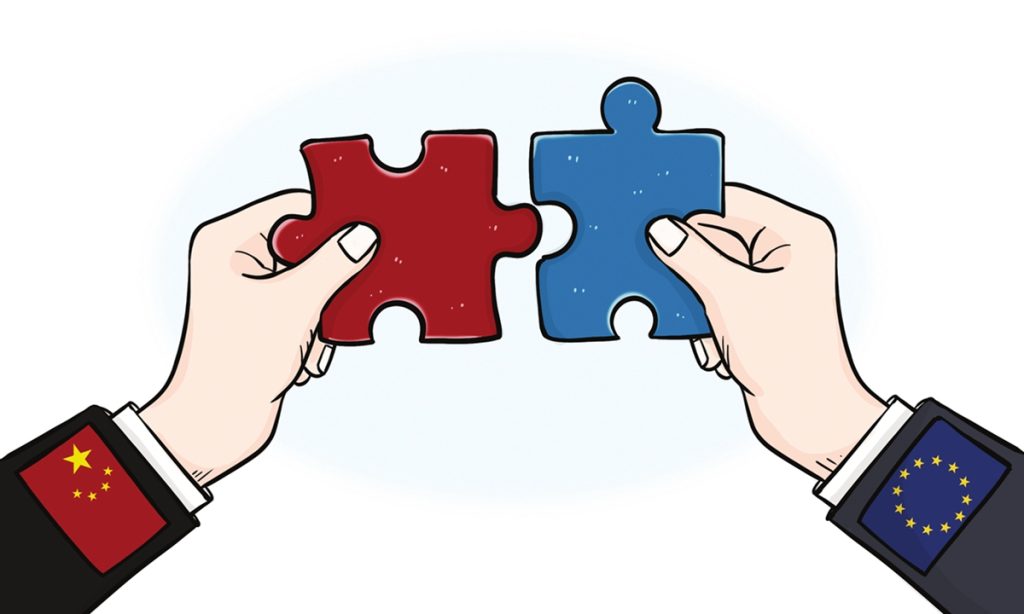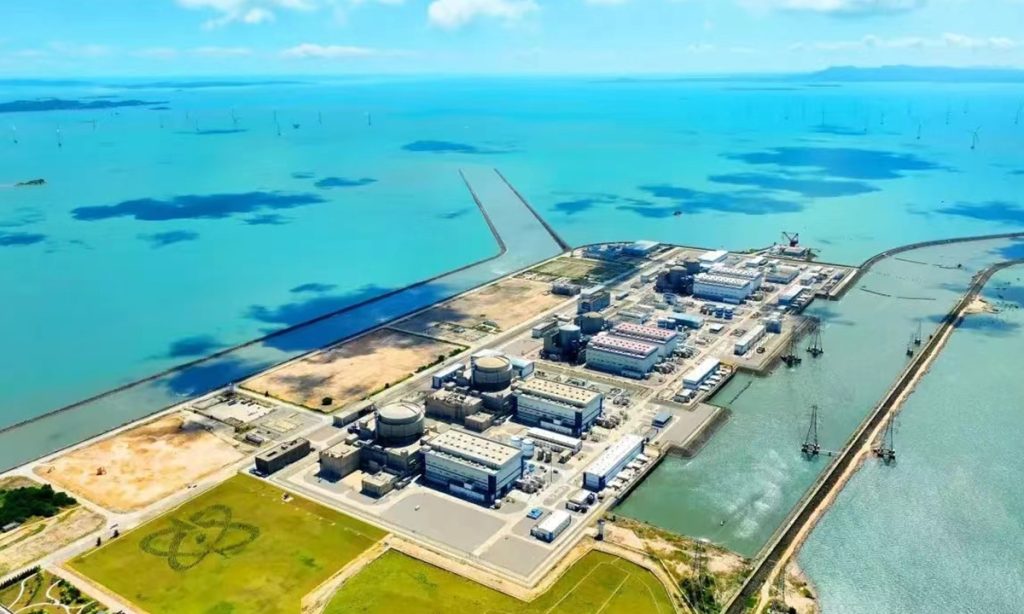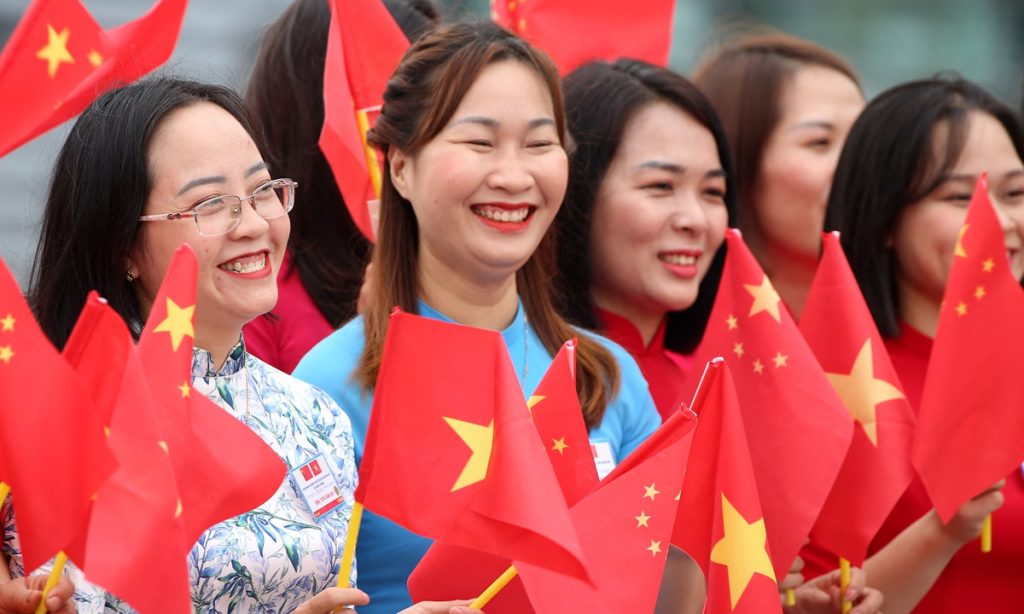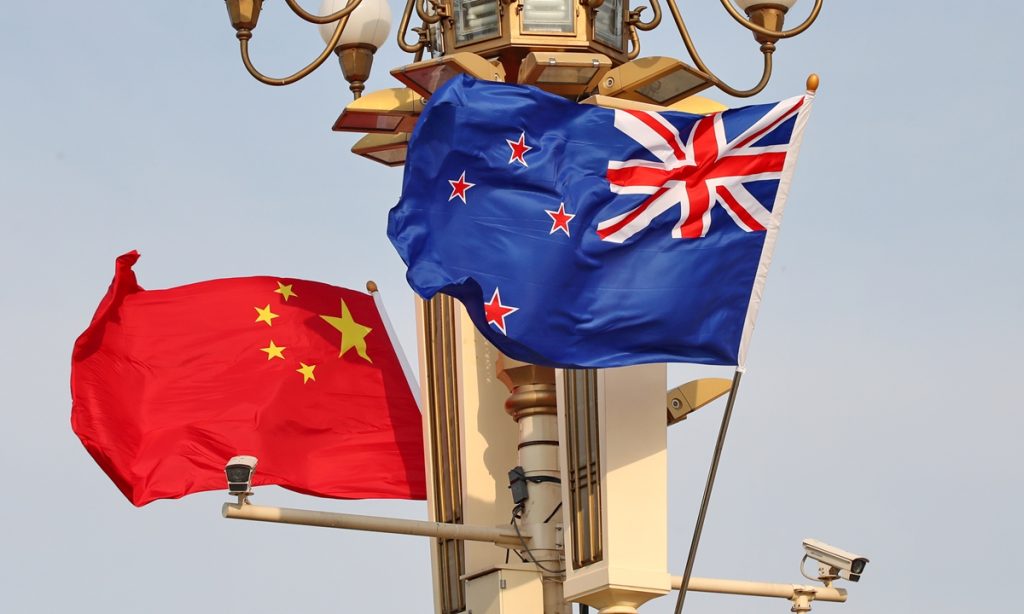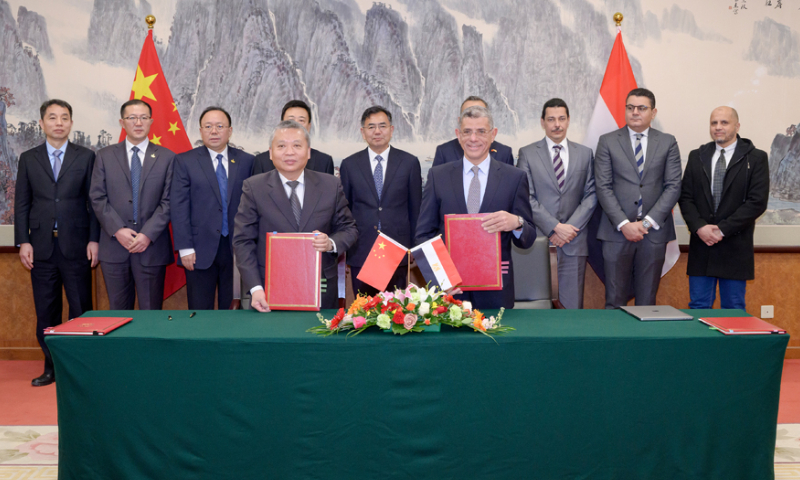GT investigates: Who’s the Philippine NGO that is inciting Filipino civilians to launch new round of staged provocation near China’s Huangyan Dao?

After recruiting journalists and "fisherfolk" to launch infringing activities in the South China Sea, the Philippines is about to play a new round of trick in staging another incident. Philippine media outlets recently reported that a Filipino non-governmental organization called Atin Ito, or "This is ours," is planning to rally a group of so-called Philippine fisherfolk to travel to the waters around China's Huangyan Dao (also known as Huangyan Island) in an attempt to use "fisherfolks" as "human shields, " to initiate a fresh round of provocation in the South China Sea and deliberately engage in "sadfishing" to the international community.
The Global Times noted from publicly available information that this so-called Filipino civic organization is, in fact, a "hired gun" fed by the US and long sponsored by US organizations. Atin Ito has continuously stirred up troubles in South China Sea and has been exerting its influence in the Philippine government's decision-making on the issue.
This organization's plan of direct involvement in the frontline of the South China Sea conflict further exposes the increasing interference from countries outside of the region, like the US, as they incite the Philippines to "step on the gas" toward confrontation in the South China Sea.
Upcoming publicity stunt
Multiple Philippine media outlets have recently covered the plan of this publicity stunt. Philippine news website rappler.com reported on May 8 that Atin Ito, a coalition that counts fisher and farmer groups, civic organizations, fisherfolk, and youth activists among its members, will travel to Huangyan Dao from May 14 to 17.
Rafaela David, one of the lead convenors of the coalition, said in a press conference on May 8 that "this is not a sightseeing excursion to seek out Chinese marine vessels or a provocation to incite conflict." However, this coalition also invited international observers to join the voyage to monitor and document the situation in the region and "witness firsthand the challenges faced by Filipinos in those waters."
David contradicted herself in her performance art by stating, "By mobilizing civilians and engaging in peaceful activities within our EEZ, we reclaim our space and assert our territorial integrity in a manner that champions peace and diplomacy."
According to Philippine media, about 200 participants are expected to join the mission, among them fisherfolk, volunteers, journalists, and observers. They are scheduled to set out from the Philippines on May 15 and trespass into waters adjacent to China's Huangyan Dao, bring supplies to Filipino fisherfolk, and deploy "symbolic buoys" bearing a provocative message: "The West Philippine Sea is ours."
This is not the first time that the Atin Ito has conducted so-called peaceful activities in the South China Sea, as this coalition had also organized dozens of fishing ships and a marine training vessel carrying Philippine civilians to bring Christmas gifts to local Philippine military personnel on islands and reefs in the region, according to Philippine media reports.
Ding Duo, deputy director of the Institute of Maritime Law and Policy at the China Institute for South China Sea Studies, told the Global Times that Atin Ito's latest plan to stir up troubles around Huangyan Dao at a larger scale will likely first have Philippine fishing vessels staying from a distance, as they would need to coordinate with the Philippine Coast Guard and journalists to take staged photos.
The coalition will likely then play the staged show of "resupply," as they could have fishing vessels coordinate with Philippine governmental ships to conduct infringing activities, Ding predicted, noting that it is also possible that civilian vessels rallied by the organization will trespass into waters restricted by China under the demand of the Philippine Coast Guard, directly disrupt law enforcement operations by the China Coast Guard, or disrupt normal fishing activities by Chinese fisherfolk.
While this scheduled infringing plan seems big under the propaganda of the Atin Ito coalition and the Philippine media, its actual scale might fall short significantly. A source close to the matter told the Global Times that while the plan allegedly rallied over 100 civilian vessels, the fact is that only about 10 ships or so will likely end up joining the publicity stunt, with most of them operating in waters not far away from the Port of Masinloc.
The source said that Philippine government ships are expected to arrive in designated waters in the early morning of May 15, then the civilian ships will hold a regatta for entertainment near the Port of Masinloc. After that, these ships will scatter, with two Philippine commercial ships carrying journalists and social activists heading toward Huangyan Dao on May 16 and return to the Philippines on the same day.
Atin Ito is expected to hold a press conference in Manila on May 17 to continue to hype this farce, the source said.
Ding said that this organization's activities often fall short of expectations and follow fixed patterns. They usually hype up their activities beforehand, make high profile forecasts on domestic media and social media platforms, and instigate nationalist sentiments. At the same time, the organization also raises donations through its website, urging for supplies to Philippine fishing ships operating around China's Huangyan Dao and Ren'ai Jiao (also known as Ren'ai Reef). In addition, this organization also makes various publicity stunts, including live shows, press conferences, and seminars in a bid to increase its political presence.
'Hired gun' by US military
Although it publicly claims to be an independent Philippine organization pursuing peace, the actions of the Atin Ito coalition are more akin to a "hired gun" serving the US strategy in the South China Sea. In fact, its ability to coordinate resources within the Philippines, as well as its intricate relationships with pro-American figures in the US military and Filipino politics, all highlight that it is far from a simple Filipino civil organization.
In a recent field interview in the Philippines, Global Times reporters noted that similar to many Western civil organizations that serve political purposes, Atin Ito excels at expanding its influence in a people-friendly manner. For example, it manufactures and sells exclusive brand accessories, handicrafts, or tourist souvenirs. Through this method, it raises funds for activities, promotes its image, and advocates its political stance.
Ding said that, "the Atin Ito coalition seems to be a so-called non-profit civil organization, as it intentionally downplays its political color in its official website introduction and propaganda campaign, but in fact, it has a certain political background. This is first reflected in the fact that the actual leader of the organization, Rafaela David, is also the chairman of the Akbayan Party in the Philippines. Although this political party is relatively small in the Philippine political arena, it has been using various political issues in the Philippines to increase its presence and influence in recent years. Atin Ito and the Akbayan Party present a complementary relationship, as the Akbayan Party provides political resources for the activities of Atin Ito, and the activities organized by Atin Ito can increase the exposure of Rafaela David, granting her more political benefits."
Philippine media reports showed that the Akbayan Party has been an active participant and organizer of many anti-China demonstrations in the Philippines, and Atin Ito was often present at these events. In return, the Akbayan Party actively gathers Philippine political figures to support the activities of Atin Ito.
Philippine media Palwan News reported in March that Philippine political figures such as Senator Risa Hontiveros, former ambassador Victoria Bataclan and civilian opinion leaders, as well as representatives from the British, Australian, Dutch, Swedish, and European Union embassies attended a photo exhibit and film screen held in Manila that month, when Altin Ito announced Huangyan Dao as a potential destination for its next mission of "delivering aid to fisherfolk." This highlighted the close ties between the coalition and the party.
In addition, the militaries of the Philippines and the US also do not hide their relations with Atin Ito. The Philippine Star, on May 3, reported that, Commodore Roy Vincent Trinidad, a Philippine Navy spokesman, voiced support on May 2 for Atin Ito's upcoming "civilian supply mission" to Huangyan Dao. "And so long as they abide by all the guidelines given by the government, we support all activities, civic society," he said.
Philippine naval vessels or Philippine Coast Guard vessels were also often seen accompanying Atin Ito's activities in their previous activities in the South China Sea, Philippine media reports showed.
A report titled America's Project Myoushu and the Philippine's Atin Ito Coalition is gearing up for a proof of concept that may lead us to war published on the Philippine-based Asian Century Journal in December 2023 asked, "Who is funding the Atin Ito Coalition and their operations? A marine convoy like this involves a tremendous amount of logistical planning and support not to mention the financial means to undertake one." It further questioned, "Who are the people behind the Atin Ito Coalition? They claim it's a civil society group aiming to further our country's vital security interests yet they defy our National Security Council's advice."
Citing an article titled Lighting Up The Gray Zone by US Air Force Captain Benjamin Goirigolzarri published on the US Naval Institute's website, the Asian Century Journal report said that the US established a new strategy in the South China Sea called Project Myoushu, which is a derivative of the US Naval Institute's Maritime Counterinsurgency (COIN) Project tailored specifically to counter China's "dominance" in the South China Sea. The project previously hyped the China Coast Guard's law enforcement operations in the South China Sea, attempted to incite public opinion and push for governments of countries in the South China Sea to become hard on China, and damaged the peace China and other countries in the region have created.
The Asian Century Journal report deduced that the Atin Ito Coalition is indeed a joint US-Philippines effort, as the Project Myoushu is described as an independent, civil society-led initiative that maintains separation from potential public perceptions of bias and bureaucratic obstacles that can hinder government-led efforts.
Further evidence the report provided is that the Project Myoushu as a concept was presented only in Manila in January 2023 at a conference hosted by local think tank Stratbase, and the report suggested that Stratbase is funded by the US. "So, there they are hiding in plain sight where no one is looking -- America's manipulative hands still pulling the Philippine government's strings," the report said.
Underestimated China's determination
Whether it is the so-called Philippine non-governmental organizations such as the Atin Ito coalition, or Project Myoushu behind it, their operating patterns are nothing more than orchestrated shows and staged behaviors to exert public opinion pressure on China, undermine China's efforts of pursuing peace in the South China Sea, and try to force China to make concessions over its sovereignty in the South China Sea issue. However, the Philippine politicians with these calculations clearly underestimated China's determination and will to safeguard its sovereignty.
Ding said that Atin Ito's plan cannot reach its goals. Given China's ability to safeguard sovereignty and maritime rights on Huangyan Dao, no matter what form or scale the Philippines uses to infringe and provoke, it will definitely be met with strong countermeasures.
Videos released by Philippine media showed that when dealing with the Philippines' infringement actions in waters off Huangyan Dao, the China Coast Guard's law enforcement forces have rich methods. During the handling process, a series of measures including verbal warnings, navigation route restrictions, and warning shots with water cannons were used based on different situations. Such law enforcement actions were conducted in accordance with laws and regulations, and were reasonable, powerful, but also restrained. It shows that China will resolutely safeguard its territorial sovereignty and maritime rights, and will not give the Philippines any space for hype from a legal perspective.
Chen Xiangmiao, director of the World Navy Research Center at the National Institute for South China Sea Studies, told the Global Times that some fanatics in the Philippines are driven by a revanchist mentality and repeatedly stage "the Farmer and the Snake" scenarios, attempting to copy the Ren'ai Jiao model - pursuing territorial sovereignty in the name of so-called fishing boat replenishment. In this regard, China's patience definitely has limits.
The normalization of the Philippines' trespasses is seeing confrontation replacing dialogue and cooperation as the main line for China and the Philippines to resolve conflicts over Huangyan Dao. The Marcos Jr administration's tough actions may earn diplomatic applause from the US and the West, but the frequent and tense confrontations on the frontline have also restrained the huge military, police and diplomatic energy of both the Philippines and China. Other than wasting economic investment and escalating the risk of unexpected events at sea, such moves have no other valuable benefits, Chen said.

